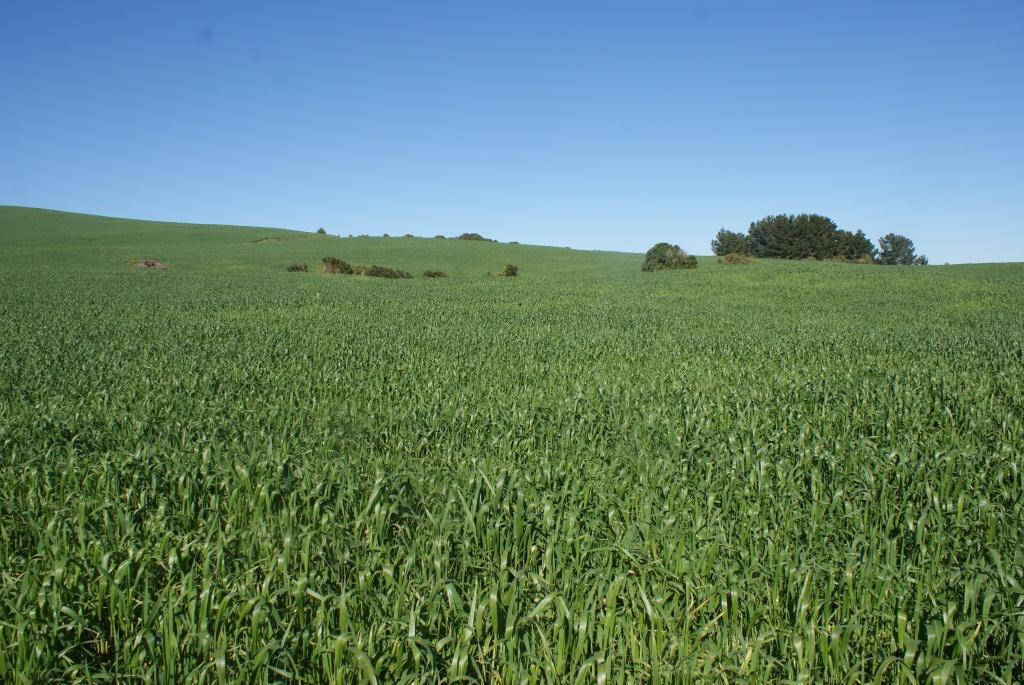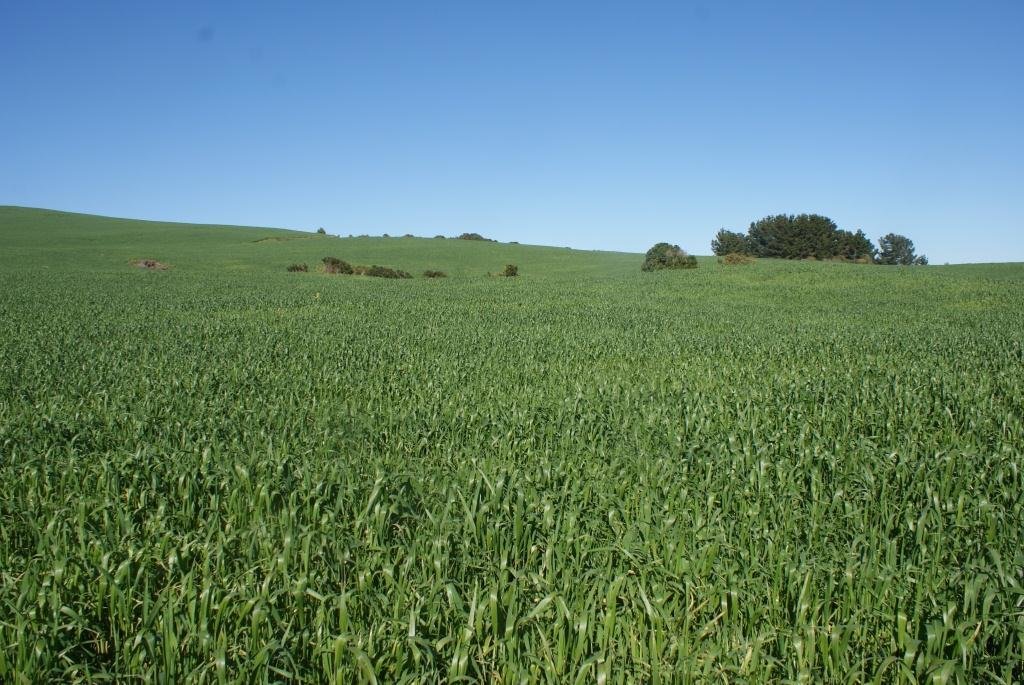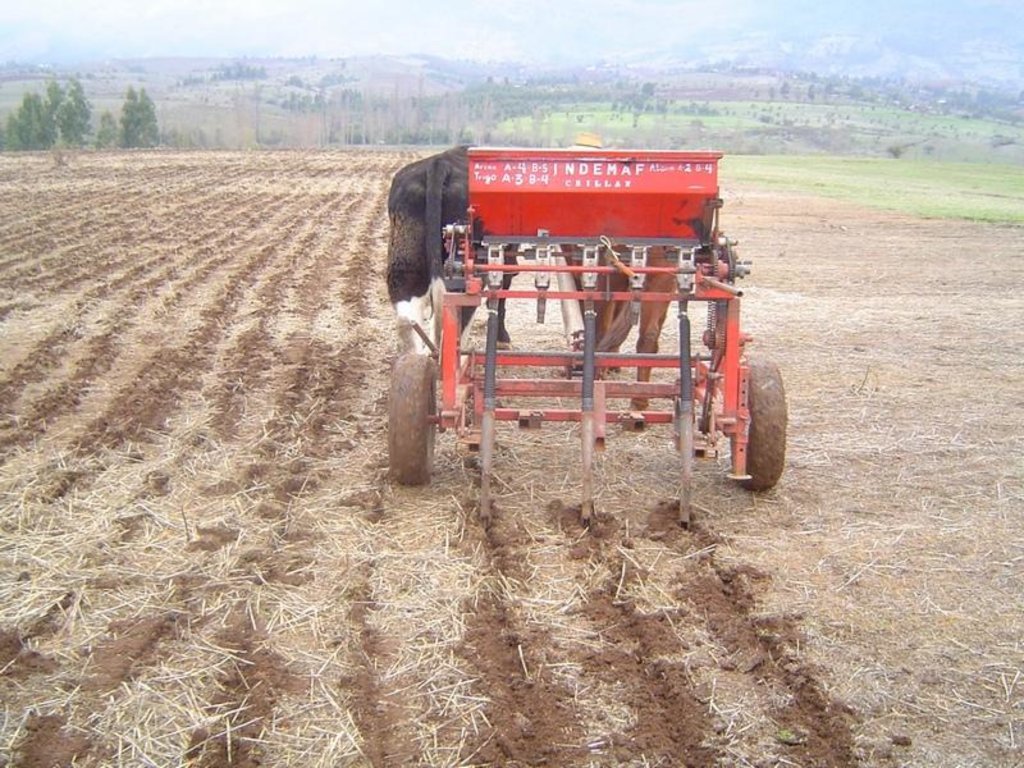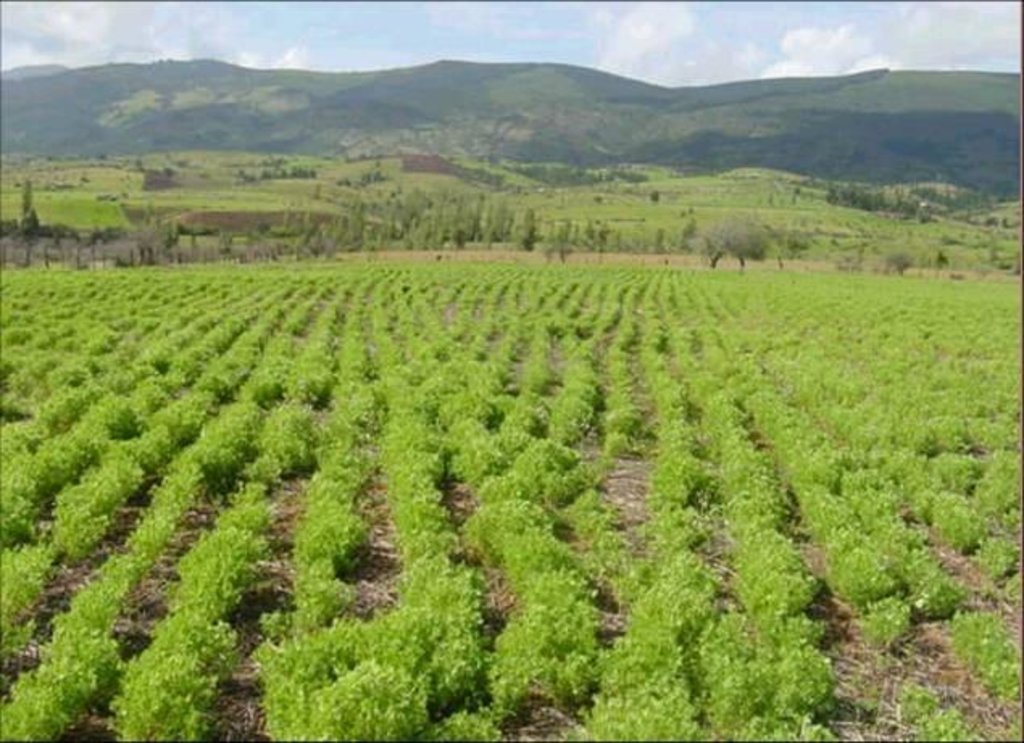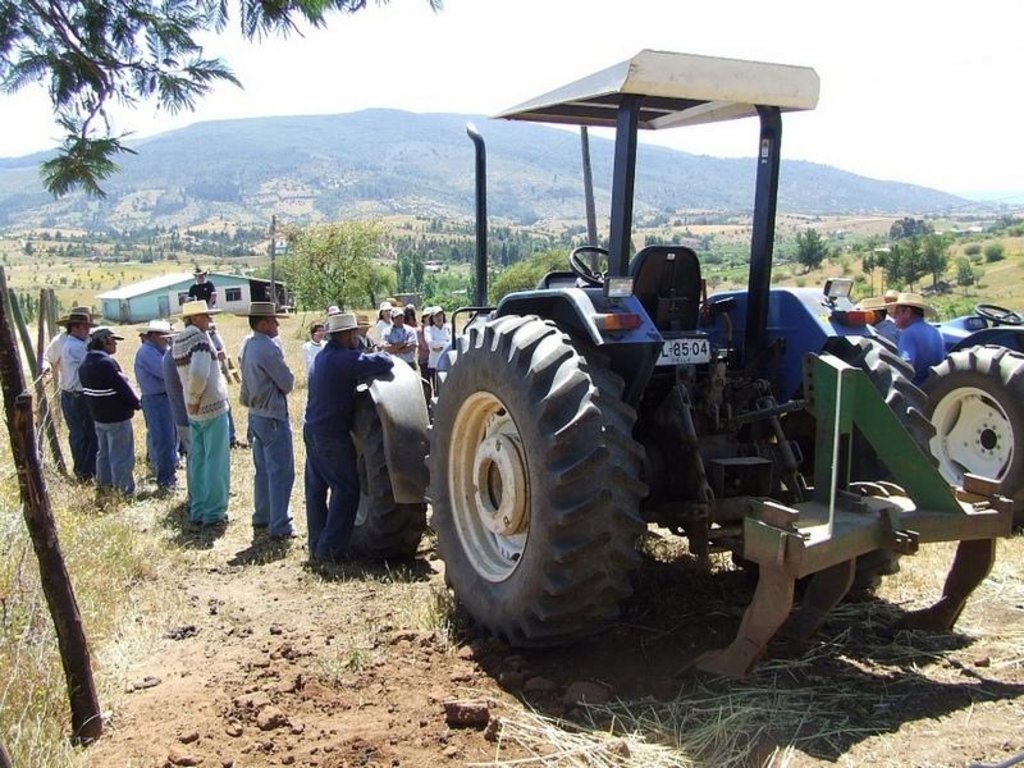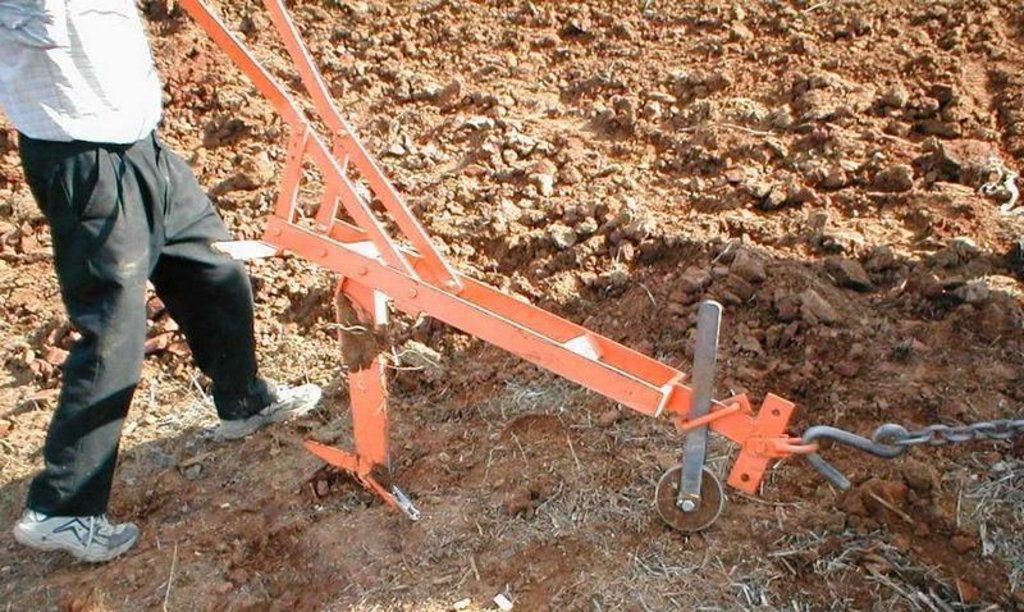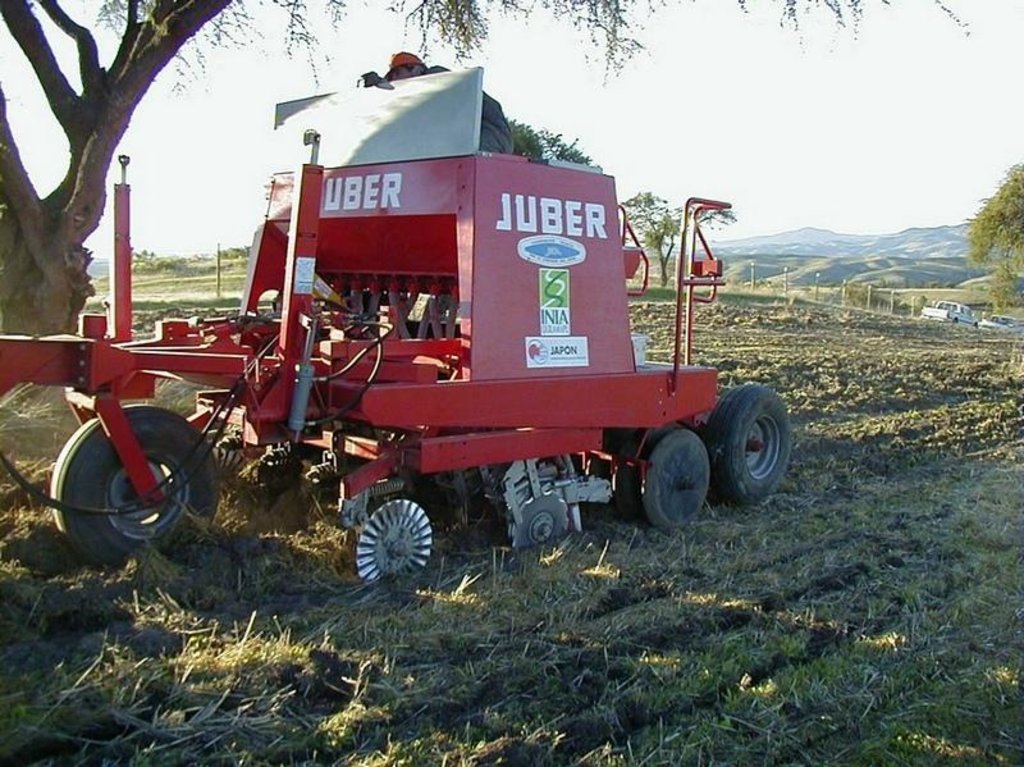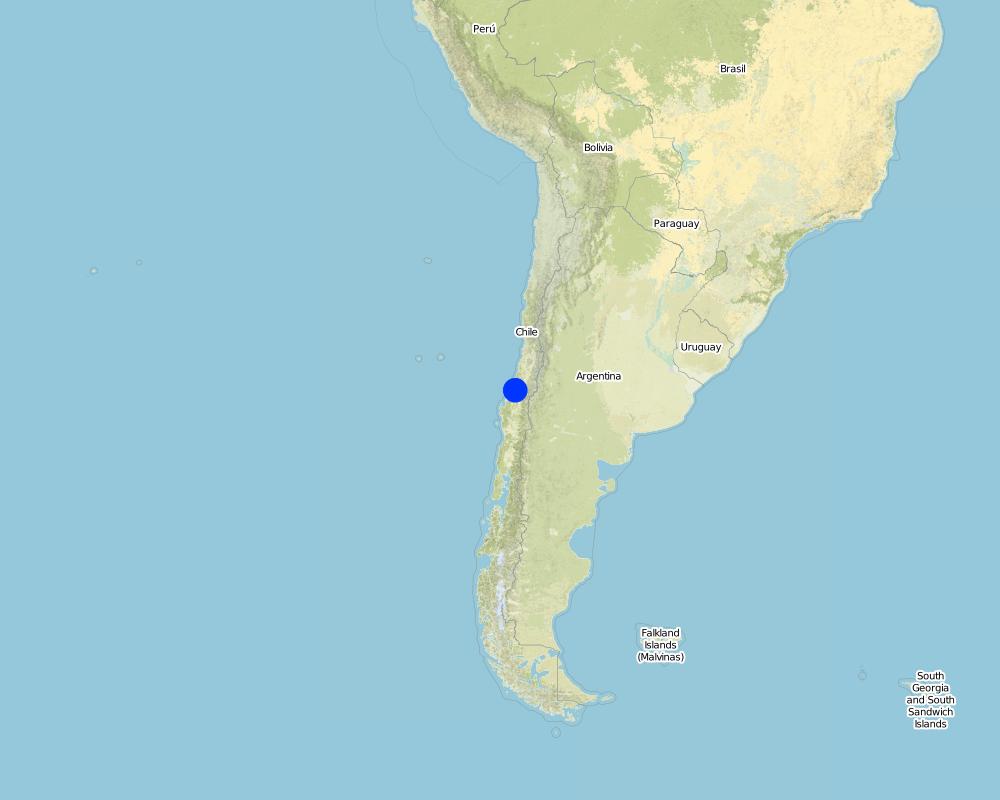No tillage preceded by subsoiling [智利]
- 创建:
- 更新:
- 编制者: Carlos Ovalle
- 编辑者: –
- 审查者: Deborah Niggli
Cero labranza con subsolado
technologies_1012 - 智利
查看章节
全部展开 全部收起1. 一般信息
1.2 参与该技术评估和文件编制的资源人员和机构的联系方式
SLM专业人员:
有助于对技术进行记录/评估的项目名称(如相关)
DESIRE (EU-DES!RE)有助于对技术进行记录/评估的机构名称(如相关)
Instituto de Investigaciones Agropecuarias (INIA) (Instituto de Investigaciones Agropecuarias (INIA)) - 智利1.3 关于使用通过WOCAT记录的数据的条件
(现场)数据是什么时候汇编的?:
03/09/2009
编制者和关键资源人员接受有关使用通过WOCAT记录数据的条件。:
是
1.5 请参阅有关SLM方法的问卷
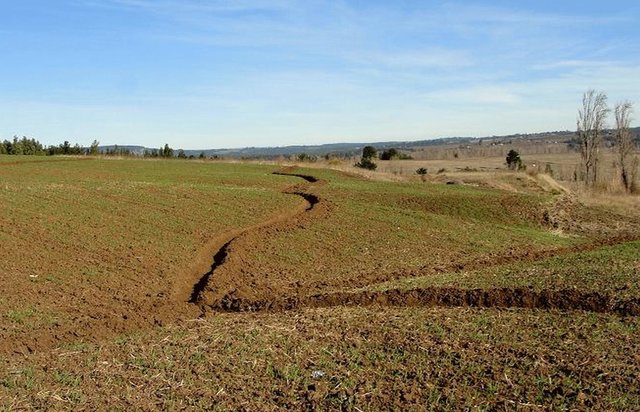
Dissemination of soil conservation technologies in dryland areas [智利]
Dissemination of no tillage with subsoiling in the Municipality of Yumbel
- 编制者: Carlos Ovalle
2. SLM技术的说明
2.1 技术简介
技术定义:
No tillage preceded by subsoiling consists in the use of a subsoiler at a 50 cm depth every 5 years before performing no tillage agriculture.
2.2 技术的详细说明
说明:
In the “secano interior” of the Mediterranean climate area of central Chile, water erosion and inappropriate agricultural systems along hillslopes are the major causes of soil degradation.
Subsoil tillage is performed with a three-pointed 50-cm chisel plough (see photo), without turning the soil. Subsoiling is needed every five years to break the hard pan after soil compaction. Then crops are directly seeded without any tillage and with stubble left on the field.
Purpose of the Technology: Subsoiling before zero tillage agriculture mitigates water erosion compared to the traditional tillage. In heavy rainfall events, zero tillage reduced soil loss by more than 72% compared to conventional tillage. In addition, the runoff coefficient during the rainy period was 70% lower with zero tillage These results show the importance of conservation tillage and crop stubble management for decreasing erosion, especially in years when extreme rainfall events lead to a high potential for soil erosion. In relation to soil compaction, comparing the resistance to penetration in the soil profile, the traditional tillage system showed a strongly compacted layer at a depth of 10 cm (>1300 kPa), which increased to over 2000 kPa at depths of 15-20 cm. In contrast, no tillage preceded by subsoiling showed less compaction, beyond 20 cm below the threshold of 2000 kPa, defined by several authors as the critical threshold for radicular growth. Moreover, cereal production showed higher biomass and grain yield. It is concluded that subsoiling before no tillage agriculture with stubble retained on the surface was the best option to mitigate soil erosion.
Establishment / maintenance activities and inputs: The main disadvantage of the system is that the farmer requires more capital to lease machinery, which in the traditional system is done with animal traction, and the horses or oxen are from their own property. However, the improved yield covers the machinery lease costs. Additionally, the system pushes small farmers into co-operatives, because it is not possible for everyone to own the equipment. To resolve this problem the project promoted the creation of small enterprises (of 10 people) to jointly purchase no-tillage machinery.
Natural / human environment: The area has a subhumid Mediterranean climate with an average annual precipitation of 695 mm (80% concentrated in winter), with five months of drought. Soils are Alfisols of the Cauquenes type, classified as Ultic Palexeralfs. The soil is made up of materials of granite origin with moderate acidic conditions and low organic carbon. Soil clay content is 15% between 0 and 18 cm depth, below this depth it is higher than 44%. Topography is a hillside with 10 to 20 % slope and the main traditional crop rotation is oat-wheat or wheat-natural pasture.
2.3 技术照片
2.5 已应用该技术的、本评估所涵盖的国家/地区/地点
国家:
智利
区域/州/省:
Bíobio and Maule region
有关地点的进一步说明:
Cauquenes
Map
×2.6 实施日期
如果不知道确切的年份,请说明大概的日期:
- 不到10年前(最近)
2.7 技术介绍
详细说明该技术是如何引入的:
- 通过项目/外部干预
3. SLM技术的分类
3.1 该技术的主要目的
- 减少、预防、恢复土地退化
3.2 应用该技术的当前土地利用类型

农田
- 一年一作
- 多年一作(非木材)
主要农作物(经济作物及粮食作物):
major cash crop: Wheat and vineyards
major food crop: Wheat

混合(作物/放牧/树木),包括农林
- 林牧业
主要产品/服务:
sheep
注释:
Major land use problems (compiler’s opinion): The soil shows severe water erosion. 75% of the area has slope over 15% and most soils are moderately to severely eroded. Soils with low infiltration (only 4%) are very compacted, because of agricultural practices.
Major land use problems (land users’ perception): The soil presents a severe water erosion.
Mixed: (eg agro-pastoralism, silvo-pastoralism): sheep
Livestock is grazing on crop residues
如果由于技术的实施而导致土地用途发生变化,则在技术实施前说明土地利的用途。:
Cropland: Ca: Annual cropping
3.3 有关土地利用的更多信息
该技术所应用土地的供水:
- 雨养
每年的生长季节数:
- 1
具体说明:
Longest growing period in days: 300; Longest growing period from month to month: Mar-Nov
牲畜密度(如相关):
10-25 LU /km2
3.4 该技术所属的SLM组
- 最小的土壤扰动
3.5 技术传播
具体说明该技术的分布:
- 均匀地分布在一个区域
注释:
Total area covered by the SLM Technology is 10 sq km.
3.6 包含该技术的可持续土地管理措施

农艺措施
- A4:地表下处理
注释:
Type of agronomic measures: cover cropping, mineral (inorganic) fertilizers, breaking compacted topsoil, zero tillage / no-till
3.7 该技术强调的主要土地退化类型

物理性土壤退化
- Pc:压实
注释:
Main type of degradation addressed: Pc: compaction
Main causes of degradation: soil management, Heavy / extreme rainfall (intensity/amounts), poverty / wealth, education, access to knowledge and support service
3.8 防止、减少或恢复土地退化
具体数量名该技术与土地退化有关的目标:
- 防止土地退化
- 减少土地退化
注释:
Secondary goals: mitigation / reduction of land degradation
4. 技术规范、实施活动、投入和成本
4.1 该技术的技术图纸
作者:
Carlos Ruiz
4.2 技术规范/技术图纸说明
Photo of subsoiling drill.
The subsoiler is a 3-point chisel plough that breaks up the soil hardpan to a depth of 30 to 50 cm.
Location: Bíobio and Maule Region. Cauquenes, Chile
Date: 2007
Technical knowledge required for land users: high
Main technical functions: improvement of topsoil structure (compaction), increase of infiltration, increase / maintain water stored in soil
Secondary technical functions: control of raindrop splash, control of dispersed runoff: retain / trap, control of dispersed runoff: impede / retard, improvement of ground cover, increase in organic matter
Cover cropping
Material/ species: Wheat straw
Quantity/ density: 2,5 tn/ha
4.3 有关投入和成本计算的一般信息
具体说明成本计算所用货币:
- 美元
4.4 技术建立活动
| 活动 | 措施类型 | 时间 | |
|---|---|---|---|
| 1. | No tillage machinery | ||
| 2. | Subsoiling every 5 years |
4.5 技术建立所需要的费用和投入
| 对投入进行具体说明 | 单位 | 数量 | 单位成本 | 每项投入的总成本 | 土地使用者承担的成本% | |
|---|---|---|---|---|---|---|
| 劳动力 | Subsoiling | unit | 1.0 | 50.0 | 50.0 | 100.0 |
| 设备 | Renting seeder machine | unit | 1.0 | 60.0 | 60.0 | |
| 设备 | Renting subsoiling machine | unit | 1.0 | 70.0 | 70.0 | |
| 技术建立所需总成本 | 180.0 | |||||
4.6 维护/经常性活动
| 活动 | 措施类型 | 时间/频率 | |
|---|---|---|---|
| 1. | Herbicide application | 农业学的 | |
| 2. | Seeding | 农业学的 | |
| 3. | Fertilization | 农业学的 |
4.7 维护/经常性活动所需要的费用和投入(每年)
| 对投入进行具体说明 | 单位 | 数量 | 单位成本 | 每项投入的总成本 | 土地使用者承担的成本% | |
|---|---|---|---|---|---|---|
| 劳动力 | Herbicide application | unit | 1.0 | 20.0 | 20.0 | |
| 设备 | Renting seeder machine | unit | 1.0 | 60.0 | 60.0 | |
| 植物材料 | Seeds | unit | 1.0 | 50.0 | 50.0 | |
| 肥料和杀菌剂 | Fertilizer | unit | 1.0 | 174.0 | 174.0 | |
| 肥料和杀菌剂 | Herbicide | unit | 1.0 | 20.0 | 20.0 | |
| 技术维护所需总成本 | 324.0 | |||||
注释:
Machinery/ tools: Animal traction and No tillage machine
4.8 影响成本的最重要因素
描述影响成本的最决定性因素:
Availability of machinery is the most determining factor affecting the costs.
5. 自然和人文环境
5.1 气候
年降雨量
- < 250毫米
- 251-500毫米
- 501-750毫米
- 751-1,000毫米
- 1,001-1,500毫米
- 1,501-2,000毫米
- 2,001-3,000毫米
- 3,001-4,000毫米
- > 4,000毫米
有关降雨的规范/注释:
80% rainfall between May - August
农业气候带
- 半湿润
Thermal climate class: temperate
5.2 地形
平均坡度:
- 水平(0-2%)
- 缓降(3-5%)
- 平缓(6-10%)
- 滚坡(11-15%)
- 崎岖(16-30%)
- 陡峭(31-60%)
- 非常陡峭(>60%)
地形:
- 高原/平原
- 山脊
- 山坡
- 山地斜坡
- 麓坡
- 谷底
垂直分布带:
- 0-100 m a.s.l.
- 101-500 m a.s.l.
- 501-1,000 m a.s.l.
- 1,001-1,500 m a.s.l.
- 1,501-2,000 m a.s.l.
- 2,001-2,500 m a.s.l.
- 2,501-3,000 m a.s.l.
- 3,001-4,000 m a.s.l.
- > 4,000 m a.s.l.
5.3 土壤
平均土层深度:
- 非常浅(0-20厘米)
- 浅(21-50厘米)
- 中等深度(51-80厘米)
- 深(81-120厘米)
- 非常深(> 120厘米)
土壤质地(表土):
- 中粒(壤土、粉土)
表土有机质:
- 低(<1%)
如有可能,附上完整的土壤描述或具体说明可用的信息,例如土壤类型、土壤酸碱度、阳离子交换能力、氮、盐度等。:
Soil fertility is very low
Soil drainage / infiltration is good
Soil water storage capacity is low
5.4 水资源可用性和质量
地下水位表:
5-50米
地表水的可用性:
匮乏/没有
水质(未处理):
良好饮用水
5.5 生物多样性
物种多样性:
- 中等
5.6 应用该技术的土地使用者的特征
生产系统的市场定位:
- 混合(生计/商业
非农收入:
- 收入的10-50%
相对财富水平:
- 贫瘠
个人或集体:
- 个人/家庭
机械化水平:
- 畜力牵引
- 机械化/电动
性别:
- 男人
说明土地使用者的其他有关特征:
Land users applying the Technology are mainly Leaders / privileged
Population density: 10-50 persons/km2
Annual population growth: < 0.5%
and own 60% of the land.
5.7 应用该技术的土地使用者拥有或租用的平均土地面积
- < 0.5 公顷
- 0.5-1 公顷
- 1-2 公顷
- 2-5公顷
- 5-15公顷
- 15-50公顷
- 50-100公顷
- 100-500公顷
- 500-1,000公顷
- 1,000-10,000公顷
- > 10,000公顷
这被认为是小规模、中规模还是大规模的(参照当地实际情况)?:
- 小规模的
5.8 土地所有权、土地使用权和水使用权
土地所有权:
- 个人,有命名
土地使用权:
- 个人
用水权:
- 个人
5.9 进入服务和基础设施的通道
健康:
- 贫瘠
- 适度的
- 好
教育:
- 贫瘠
- 适度的
- 好
技术援助:
- 贫瘠
- 适度的
- 好
就业(例如非农):
- 贫瘠
- 适度的
- 好
能源:
- 贫瘠
- 适度的
- 好
道路和交通:
- 贫瘠
- 适度的
- 好
饮用水和卫生设施:
- 贫瘠
- 适度的
- 好
金融服务:
- 贫瘠
- 适度的
- 好
6. 影响和结论性说明
6.1 该技术的现场影响
社会经济效应
生产
作物生产
生产故障风险
土地管理
收入和成本
农业投入费用
农业收入
工作量
社会文化影响
食品安全/自给自足
社区机构
SLM/土地退化知识
livelihood and human well-being
注释/具体说明:
mproved tillage improves crop yields and thus household income increases
生态影响
水循环/径流
地表径流
土壤
土壤覆盖层
土壤流失
土壤结壳/密封
土壤压实
养分循环/补给
土壤有机物/地下C
生物多样性:植被、动物
生物量/地上C
6.2 该技术的场外影响已经显现
水资源可用性
6.3 技术对渐变气候以及与气候相关的极端情况/灾害的暴露和敏感性(土地使用者认为的极端情况/灾害)
渐变气候
渐变气候
| 季节 | 气候变化/极端天气的类型 | 该技术是如何应对的? | |
|---|---|---|---|
| 年温度 | 增加 | 好 |
气候有关的极端情况(灾害)
气象灾害
| 该技术是如何应对的? | |
|---|---|
| 局地暴雨 | 好 |
气候灾害
| 该技术是如何应对的? | |
|---|---|
| 干旱 | 不好 |
注释:
It is necessary to realize subsoiling to improve the yields
6.4 成本效益分析
技术收益与技术建立成本相比如何(从土地使用者的角度看)?
短期回报:
积极
长期回报:
积极
技术收益与技术维护成本/经常性成本相比如何(从土地使用者的角度看)?
短期回报:
积极
长期回报:
积极
6.5 技术采用
- 10-50%
如若可行,进行量化(住户数量和/或覆盖面积):
100 households
在所有采用这项技术的人当中,有多少人是自发地采用该技术,即未获得任何物质奖励/付款?:
- 0-10%
注释:
100% of land user families have adopted the Technology with external material support
100 land user families have adopted the Technology with external material support
There is no trend towards spontaneous adoption of the Technology
6.7 该技术的优点/长处/机会
| 编制者或其他关键资源人员认为的长处/优势/机会 |
|---|
|
No tillage preceded by subsoiling as part of the incentive programme for the recovery of degraded soils managed by the Agriculture and Livestock Service (SAG) How can they be sustained / enhanced? Adjusting incentives according to timing of the expenses and investments and also conditioning incentives to the adoption of the technologies |
6.8 技术的弱点/缺点/风险及其克服方法
| 编制者或其他关键资源人员认为的弱点/缺点/风险 | 如何克服它们? |
|---|---|
| The availability of machines is the main obstacle for adopting zero tillage and subsoiling | To create and promote small companies of agricultural machinery, managed by farmers themselves. Two examples already exist in the counties of San Carlos and Ninhue. |
7. 参考和链接
7.2 参考可用出版物
标题、作者、年份、ISBN:
www.inia.cl/link.cgi/GEAM
标题、作者、年份、ISBN:
www.inia.cl/proyectocadepa
标题、作者、年份、ISBN:
- Del Pozo, A., Del Canto, P. 1999. Areas agroclimaticas y sistemas productivos en la VII y VIII Región. (INIA)
可以从哪里获得?成本如何?
adelpozo@utalca.cl
标题、作者、年份、ISBN:
- Stolpe, Neal. 2006. Descripciones de los principales suelos de la VIII R de Chile. Depto. De Suelos y Rec. Naturales. Universidad de Concepción.
可以从哪里获得?成本如何?
nstolpe@udec.cl
链接和模块
全部展开 全部收起链接

Dissemination of soil conservation technologies in dryland areas [智利]
Dissemination of no tillage with subsoiling in the Municipality of Yumbel
- 编制者: Carlos Ovalle
模块
无模块


